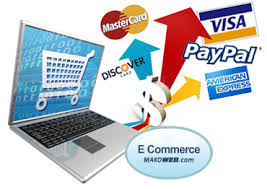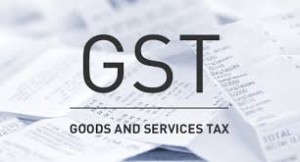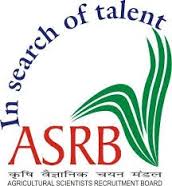YOU may be in Mumbai or in Thanjavur, no matter which part of the country you have been living in, until and unless you were not locked in a closed room, you ‘would’ have come across the buzzword of the town, ‘E-commerce’. While the concept is new to India, thanks to the likes of Amazon, the US diaspora is well familiarized with it since years. The whole e-commerce industry is growing at the pace of 40-45% per year in India.. US retail sales have hit the 4.5 trillion-dollar mark and the Indian market is expected to expand the comparatively minusculeyet-impressive benchmark of 20 billion-dollars in the near future. As we near these massive numbers, many are still wondering what this ‘e-commerce’ really means, how to benefit off it and more. Well, if you are one of those, let this article be your guide into the world of e-commerce and if you are not, there’s a lot more to learn here!
WHAT IS E-COMMERCE?
Commerce can simply be defined as an exchange of goods and services, which are done usually for money. When we buy something from a shop, we become a part of this chain. If you work for a company which produces some product, then again you become a part of this chain of commerce.
Typically a chain like this would include the following categories of people:
BUYER : The one who gets the product or service in exchange of money.
SELLER : The one who offers these products and services for money.
PRODUCER : The one who makes these products so that the sellers can offer it to the buyers.
Coming back to our specific niche, e-commerce, it refers to the sales/trading of products or provisions of any specific service i.e. any commercial transaction done with the use of the internet. While the primary means of making e-commerce purchases is via the use of a website, usually either a marketplace or the seller’s own, there are alternate methods too such as mobile apps and more. There are many advantages which electronic transactions provide provide over traditional methods and when implemented with great thought, e-commerce becomes faster, more convenient and cheaper over the traditional means of shopping and purchasing.
There are multiple sales aspect to this e-commerce system, which when combined, enables the company to provide better services to its customer.
E-COMMERCE IN INDIA
An infant in the decade gone, the industry is no more a kid around the block. Having risen drastically in the past 3 years, witnessing a growth of 150%, the E-commerce Industry has expanded from a size of INR 19,300 Cr. to INR 47,500 Cr. 75% of this is related to travel i.e. ticket bookings. Online mobile recharges and top -ups are another major contributors to this figure. India supposedly has close to 10 million online shoppers with the number expanding 30% annually. The industry is expected to reach a size of $675bn by the year 2016.
THE MOST SUCCESSFUL E-COMMERCE COMPANY IN INDIA- FLIPKART
Flipkart was founded in 2007, by Sachin Bansal and Binny Bansal. It had raised around $180 million, by September 2012, i.e., the first five years since its inception. Recently, making it the largest capital infusion for an Indian internet company, Flipkart raised $1 billion from a group of investors.
The Enforcement Directorate (ED), found flipkart in violation of FEMA provisions and is planning to send a show-cause notice to Flipkart, alleging violation of Rs. 1,400 crore. As per the section 13 of the Foreign Exchange Management Act (FEMA), 1999, if any person or entity were found to be in contravention of the Act, after the process of adjudication, the person or entity could be liable to face a penalty upto thrice the sum involved..
Flipkart has even teaped up with the Ministry of Textiles to support the handloom sector of our country, by providing the products online. Flipkart recently opened up its first offline, and the first brick-and-mortar store in Banglore, called the ‘Fliptomania’. Myntra, which was acquired by Flipkart in May 2014, dominates the online fashion market. Myntra and Flipkart together held control of over 60% of the online fashion business. With Flipkart, Myntra has started selling popular brands such as Roadster, Dressberry, HRX and Anouk on its own marketplace as well as that of Flipkart, in hopes of getting a combined stake of 70% in online fashion retail.
E-commerce is increasingly emerging as the fundamental sales channel for a growing number of business. E-commerce has helped us overcome the geo-physical barriers, making all the consumers and business around, potential customers and suppliers. E-commerce with its perks and disadvantages is one of the fastest growing industries throughout the globe in today’s time. Everything from a hairclip to a car, from shoes to insurance policies, almost everything and anything can be sold and bought online; because of the ever growing E-commerce. In the Indian market, Flipkart is the most visited e-commerce site and is at fierce competition, with deep-pocketed US giant Amazon, for share in the Indian market.
So, commerce, the transaction of goods and services, made all the more convenient and at your fingertips with the usage or internet is called e-commerce, Why stand in long queues, walk up and down the aisles for products, get drenched in sweat or wander from shop to shop, when everything is available on your phones, tabs or computers. E-commerce is quick, and the most convenient way of buying, selling or posting ads. And that people, is the MANTRA of this article!
Click here for government certification in Information Technology





14 Comments. Leave new
One click of the mouse and the products/services are made available at one’s footstep. Nicely written article on how ecommerce has benefited the beneficiaries.
Nice article 🙂 It covered all the aspects regarding E-commerce in India.
Well explained!
You’ve written it very well. From giving figures from the American market to detailing the readers about Flipkart, you’ve done everything quite nicely. Good job!
Surely the e-commerce has become the new definition of the business. In present scenario a business can’t grow without internet. E-commerce is the fastest mode of doing business and earning profit.
Well written article
Well explained the benifits and all but wat abt its diadvantages like if we talk abt backward area they don’t have the accessibility of so any suggestion to promote this in these areas!!!!!
This article discusses almost everything on how e-commerce affected us in the past, is affecting in present and will affect in future. Example on Flipkart was good too.
Amazingly written
Well elaborated!
E-commerce is the new sunshine industry!
awesome
Very Well Written 😀
Well articulated!